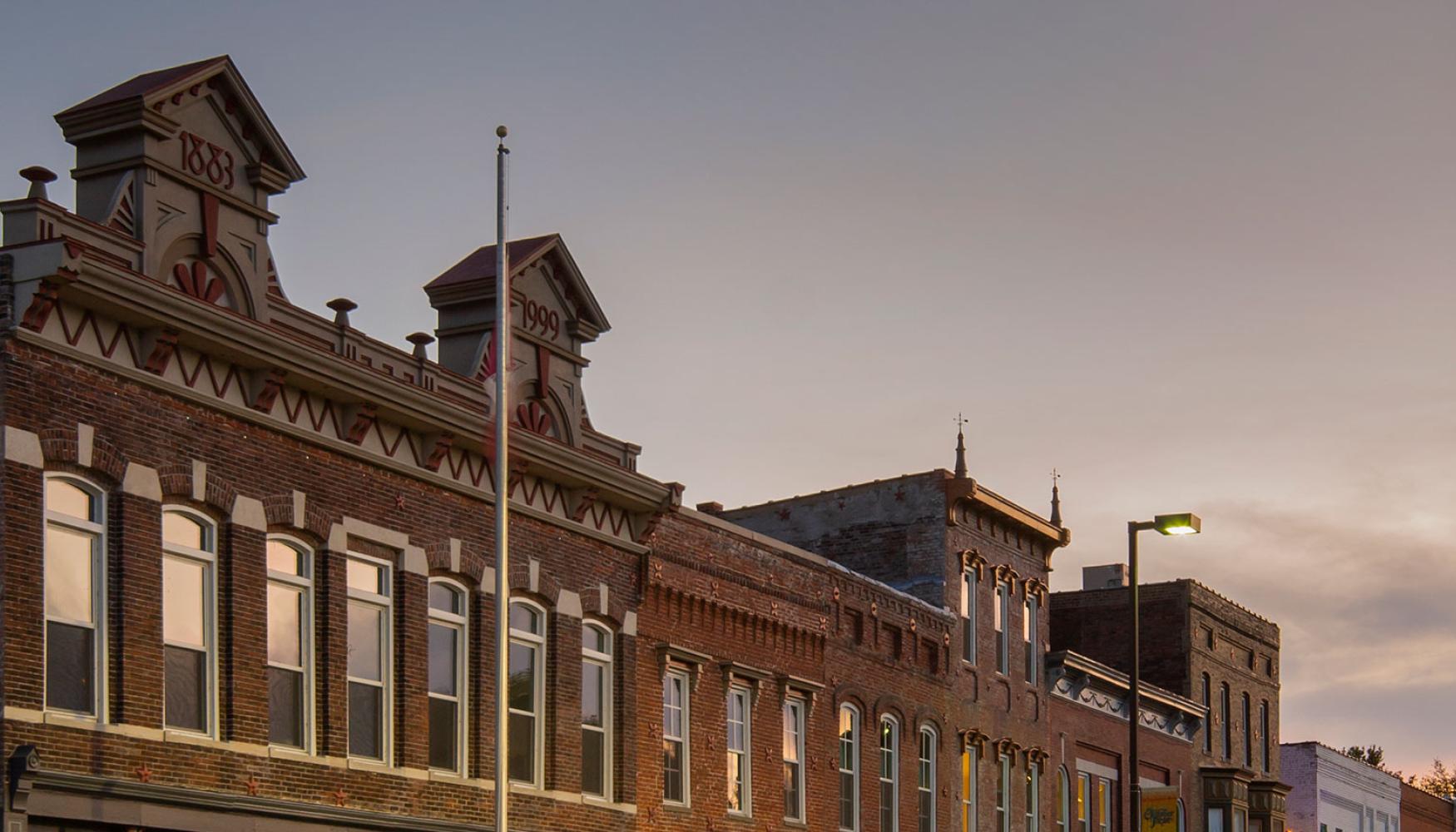Summary Video
Please view this beautiful 15-minute video produced in 2017 that summarizes the history and vision of the Lower Town Artist Relocation Program.
Program History and Structure
With Viable Neighborhoods as a goal set by the City Commission, the Planning Department undertook the creation of a neighborhood plan for the revitalization of its oldest historic neighborhood known as 'Lowertown'. Lowertown, annexed in 1836, is adjacent to the historic Downtown area. Time and neglect had taken its toll on Lowertown, and the neighborhood had become a blighted area. For example, a neighborhood analysis done in the late 1950's stated that Lowertown was "dilapidated", and it has had little or no attention since. Little had changed for the better. After an extensive planning process based on extensive neighborhood participation, the City Commission adopted the plan on February 19, 2002.
LowerTown Artist Relocation Plan (48.3 MB)
H-2 LowerTown Advisory Design Guidelines
Artist Relocation Program on ABC Nightly News, January 2007
The planning process started by developing an inventory of every structure in Lowertown. This structure inventory includes 250+ double-sided pages on information on the 333 structures in the historic neighborhood. The information included property address, ownership, land use, square footage, condition of structure, age, city liens, occupancy, lot size, and a photograph. The inventory provided a solid understanding of the area to be revitalized within the National Historic District, including the existing housing stock, existing and past land uses, and historically significant structures.
The next step in the planning process started with a series of meetings between the City and the newly re-invigorated Lowertown Neighborhood Association, neighborhood residents, and interested parties. There were four initial public meetings where planning staff and residents participated in the process of ranking the importance of the positive and negative aspects of their community and ended with a list of those items which would make their neighborhood a better place to live and work. The community was highly involved throughout the process both formally and informally. Ultimately, it was this participation which created the neighborhood's ownership of the plan and created the political support for the passage of the program by elected officials.
It was the community's responses and ideas generated through this input process that laid the foundation for the goals, objectives, elements, and recommendations of the plan. The plan was formulated as a comprehensive approach to revitalization of this historic neighborhood. Components of the plan include an evaluation of existing conditions, an evaluation of existing city policies affecting those conditions, an evaluation of existing revitalization strategies, and conclusions with recommendations for implementing better strategies to accomplish the goals set by the public input process. Research and subsequent recommendations were given on the topic of land use, transportation, public transit, lighting, crime, housing stock, building code enforcement, rental rates, infrastructure improvements, and education.
Every component of the plan has been implemented to date with great success and positive reaction from not only the residents of Lowertown but also the entire Paducah community. Implementation of the plan includes installation of the 144 new street lights; increased police patrols; aggressive code enforcement; traffic recommendations including new signaling; and the main goal of revitalization is being accomplished through code enforcement and the Artist Relocation Program.
The Artist Relocation Program has been a magnificent and innovative tool for the revitalization success of the Lowertown historical neighborhood. One key component of the success of the program and ultimately the plan is the existing historical mixed-use zone that was already in place. This zone allows for business and residential uses to coexist in the same community much as they did in the late 1800's and early 1900's. With the plan, the program concept, and city commission backing coupled with financial incentives offered by Paducah Bank, the Artist Relocation Program has exceeded everyone's expectation as a revitalization tool that could be replicated in any community. The program has been featured in numerous national television or paper publications. The program has also been fortunate enough to receive recognition by winning a City of Paducah Beautification Award, a Kentucky Arts Council grant, the 2001 James C. Howland Award for Urban Enrichment; 2002 Kentucky Governor's Government Award in the Arts; 2002 Kentucky Chapter of the American Planning Association (KAPA) Special Merit Award for Outstanding Planning; 2004 American Planning Association Award for a Special Community Initiative; 2004 Dorothy Mullins Arts & Humanities Award; 2004 Kentucky League of Cities Enterprise Cities Award; 2004 Kentucky Banker's Association Award; 2005 Rudy Bruner Award for Urban Excellence; and the 2005 International City Manager's Association Award.
Attitudes of the residents have changed, many structures have been completely renovated or brought up to code, new infill construction has taken place, and the Artist Relocation Program has been successful in recruiting over 75 new artists/residents/businesses to Lowertown and over $30 million in private investments and growing with only $2 million of City General Fund monies spent.
